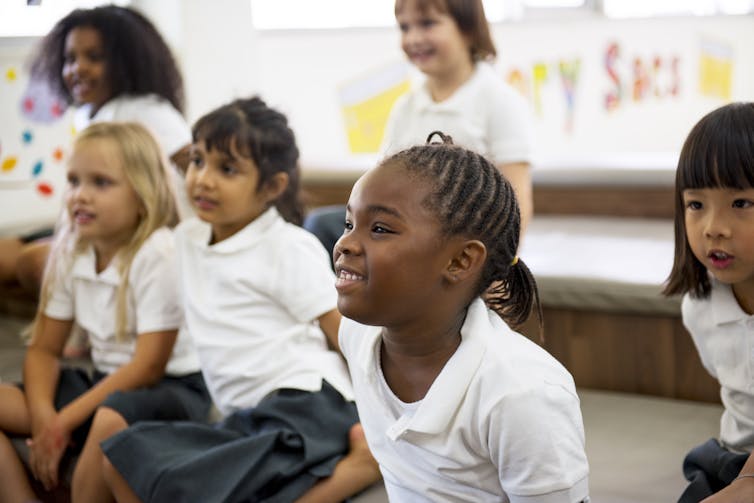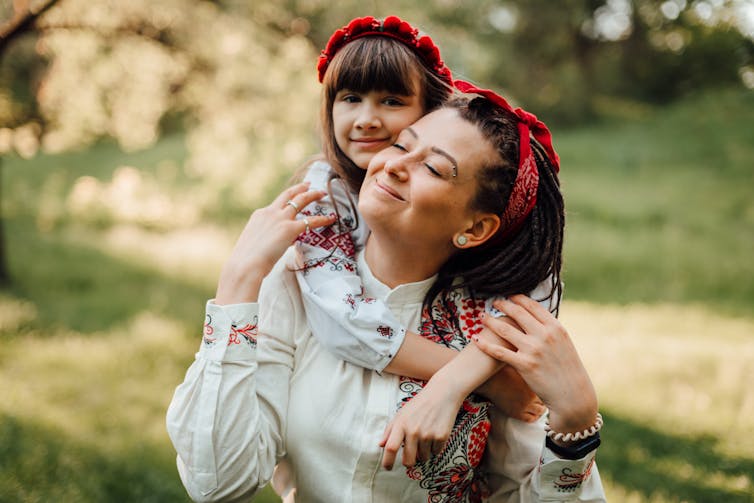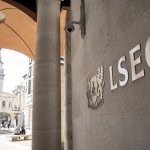Many of us live not just in diverse societies, but what anthropologist Steven Vertovec terms “super-diverse” societies. More and more people are moving around and bringing their languages and cultures with them.
In the UK, 20% of school children are multilingual. They speak at least one other language in addition to English.
Parents, of course, have a lot on their plate simply keeping their children fed, safe and educated. But if you do have more than one language in your family, then decisions have to be made on how to navigate that terrain too.
If linguists have long paid attention to the idea of bilingual parenting, a new appreciation of linguistic and cultural complexity in super-diverse societies has seen the advent of a new approach. What experts call plurilingualism views language use as fluid and dynamic.
Previous theories about language-learning in homes, where several languages are present, have often advocated strict rules. The one-language-one-parent policy sees each parent only speak their first language to the child to avoid confusion. Other immigrant parents, meanwhile, decide to speak only their heritage language at home, while the local language is learned at school.
Adopting a plurilingual approach, by contrast, brings a measure of relief. It suggests you can simply go with the flow. You can mix things up, using different languages in different situations.

Rawpixel.com | Shutterstock
Celebrating linguisitic diversity
We already know how important plurilingualism in teaching is, in terms of both the academic achievement and the wellbeing of multilingual students.
In order to understand how this translates to the home domain, in 2018 I conducted a study with 20 parents who have immigrated to Canada from nine countries in Central and Eastern Europe. I found that the type of parenting they instinctively adopted is truly plurilingual.
The parents I spoke to believe in the fluid and dynamic use of languages in their family. Many send their children to French immersion programmes, where instruction takes place both in English and French. But parents accept that their children’s French proficiency may be unlikely to match their English language skills.
On a daily basis, parents and children switch between languages. They might start one sentence in one language and finish in another. When grandparents visit from Europe, the children have to switch to the language they speak. But if a friend comes over for a playdate, they then opt for English.
Plurilingual parenting involves a liberal language policy. Many parents do not believe in punishing children for speaking in the “wrong” language at home. Even those who were strict when children were born soon realised that their children switch between languages back and forth. And parents are okay with that.
Finally, an important principle for plurilingual parenting is the interconnectedness between language and culture. Immigrant parents move across borders and also carry their culture with them. Language is crucial for identity and belonging and immigrant parents negotiate this issue in their homes on a regular basis.

Denys Poliakov | Shutterstock
Speaking Bulgarian in Canada connects children to the country of their parents even if they consider themselves Canadian. It is especially important for parents to keep up their heritage language and they communicate this importance to their children too. As one Ukrainian parent said:
This is our history, this is our heritage.
Being open to learning languages
You might have heard that having two languages in the family confuses children, delays their language development and is bad for school achievement. These are in fact myths that researchers have spent decades debunking.
By contrast, research has also shown that there are cognitive advantages to bilingualism. However, many bilingual parenting approaches have variously cautioned against introducing new languages too early in the child’s life or mixing languages. Another common piece of advice is to ensure the child learns only from so-called native speakers to get a perfect accent, impeccable grammar and a rich vocabulary.
These kinds of self-imposed rules bring discord to family life when parents are trying to “police” the language use of their children, but are usually met with resistance.
Plurilingualism, by contrast, stems from a new understanding of how languages are used. Particularly, in the area of English language education, it emphasises a more fluid approach to how students can be taught.
This school of thought values all the languages any given student is able to use, even if to varying degrees. It seeks to build on their linguistic awareness, their cultural knowledge, and their openness to learning languages all the while improving their target language.
And in line with previous studies of multilingual learners, in my study all students did well academically, whether they were in English schools, bilingual French immersion schools or in the international baccalaureate. There is clearly no harm in keeping one’s heritage language and culture. And this flexible family language policy saves parents and children from so many battles.
![]()
Max Antony-Newman received funding from the Government of Ontario and the University of Toronto.











